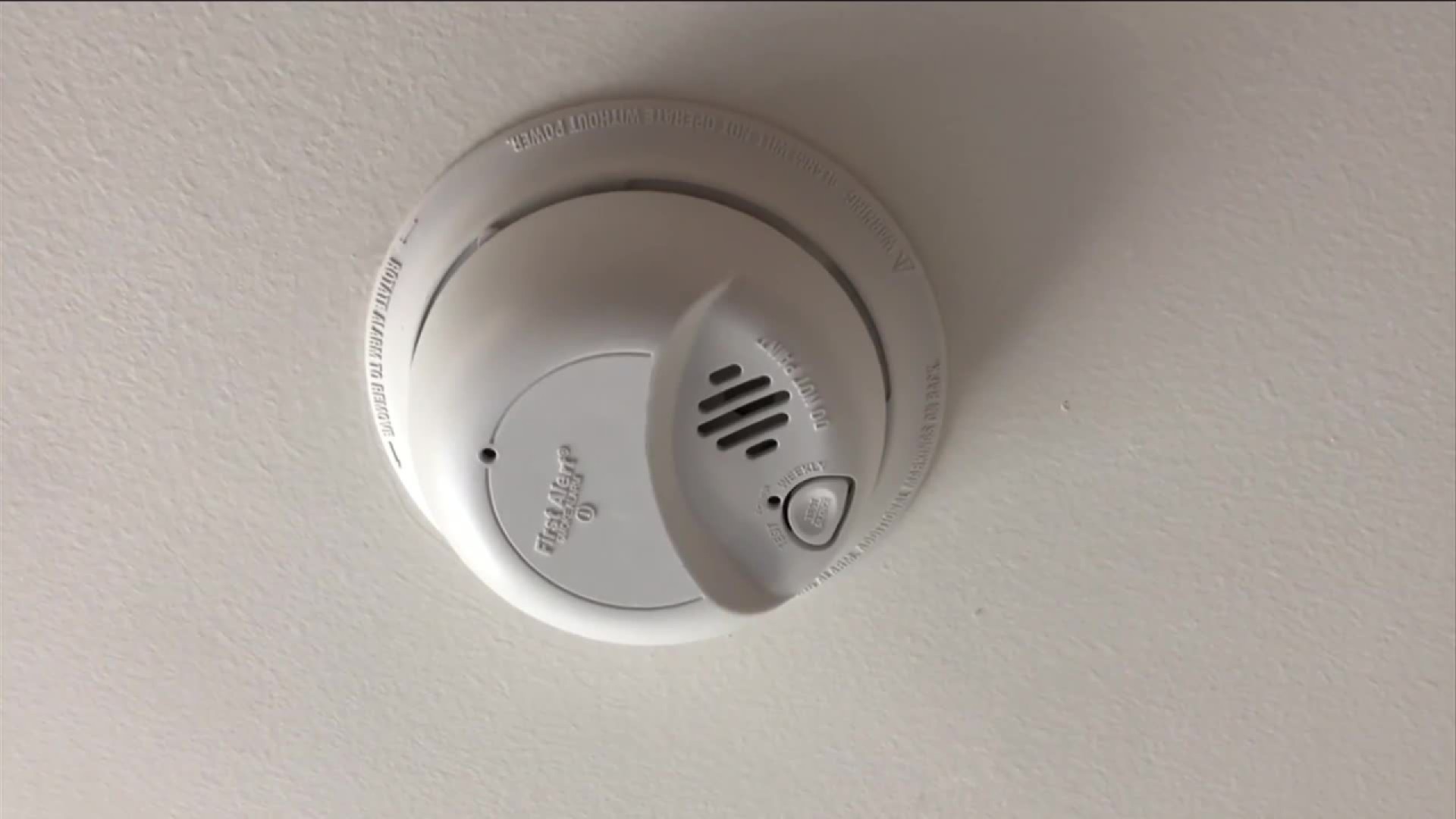

Articles
Why Do Smoke Detectors Give False Alarms?
Modified: February 21, 2024
Discover the common reasons why smoke detectors often trigger false alarms. Explore our informative articles on smoke detector maintenance and troubleshooting.
(Many of the links in this article redirect to a specific reviewed product. Your purchase of these products through affiliate links helps to generate commission for Storables.com, at no extra cost. Learn more)
Introduction
A smoke detector is a crucial safety device found in homes, offices, and public buildings. Its main function is to detect the presence of smoke and alert occupants about a potential fire. While smoke detectors are designed to save lives, they can sometimes give false alarms. False alarms can be frustrating and disruptive, leading many people to question the reliability and effectiveness of smoke detectors.
In this article, we will explore why smoke detectors give false alarms and discuss the various factors that can contribute to these inaccuracies. Understanding the causes of false alarms can help us take appropriate measures to reduce their occurrence and ensure that our smoke detectors are working correctly.
Key Takeaways:
- Regular maintenance, proper placement, and advanced detectors are key to minimizing false alarms in smoke detectors and ensuring reliable fire detection for enhanced safety.
- Understanding causes of false alarms and implementing preventive measures can optimize the effectiveness of smoke detectors, providing peace of mind and readiness for potential fire emergencies.
Understanding Smoke Detectors
Before delving into the causes of false alarms, it is important to have a basic understanding of how smoke detectors work. There are two main types of smoke detectors: ionization smoke detectors and photoelectric smoke detectors.
Ionization smoke detectors use a small amount of radioactive material to ionize the air inside the detector. When smoke enters the detector, it disrupts the flow of ions, triggering the alarm. Ionization detectors are more sensitive to fast-burning, flaming fires.
Photoelectric smoke detectors use a light source and a light-sensitive sensor. When smoke particles enter the detector, they scatter the light, causing it to hit the sensor and trigger the alarm. Photoelectric detectors are more effective at detecting slow-burning, smoldering fires.
Types of Smoke Detectors
Within the two main types, there are also combination or dual-sensor detectors, which incorporate both ionization and photoelectric technologies. These provide a higher level of detection accuracy, as they can detect a wider range of fire types.
Now that we have a basic understanding of smoke detectors, let’s explore the common causes of false alarms and how they can be prevented.
Key Takeaways:
- Regular maintenance, proper placement, and advanced detectors are key to minimizing false alarms in smoke detectors and ensuring reliable fire detection for enhanced safety.
- Understanding causes of false alarms and implementing preventive measures can optimize the effectiveness of smoke detectors, providing peace of mind and readiness for potential fire emergencies.
Understanding Smoke Detectors
Smoke detectors are essential safety devices that help protect lives and property by alerting occupants to the presence of smoke. Understanding how they work can provide insight into why they sometimes give false alarms.
There are two main types of smoke detectors: ionization smoke detectors and photoelectric smoke detectors.
Ionization smoke detectors use a small amount of radioactive material, typically Americium-241, to create a small electrical current within an ionization chamber. When smoke enters the chamber, it disrupts the flow of ions and causes a drop in the electrical current. This change triggers the alarm, alerting occupants to the potential fire.
Photoelectric smoke detectors, on the other hand, use a light source and a light-sensitive sensor. The light is directed away from the sensor in normal conditions. When smoke enters the detector and scatters the light, some of it hits the sensor and triggers the alarm.
Combination or dual-sensor smoke detectors are also available, incorporating both ionization and photoelectric technologies. These provide a higher level of detection accuracy, as they can detect a wider range of fire types.
It’s important to note that while smoke detectors are designed to detect smoke and alert occupants promptly, they are not foolproof. There are instances where smoke detectors may not activate or may give false alarms.
False alarms can occur for various reasons, including:
- Dust or dirt accumulation within the smoke detector
- Interference from cooking activities, such as excessive smoke or steam
- Environmental factors, such as high humidity or temperature fluctuations
- Insect infestation or debris inside the detector
- Sensitivity issues or improper placement of the smoke detector
- Malfunctioning batteries or electrical issues
Understanding these factors can help us take appropriate measures to prevent false alarms and ensure that our smoke detectors are functioning optimally.
In the following sections, we will explore each of these causes in more detail and provide solutions to minimize the occurrence of false alarms.
Types of Smoke Detectors
When it comes to smoke detectors, there are different types available on the market, each with its own advantages and applications. Understanding the different types of smoke detectors can help us choose the most suitable option for our specific needs.
1. Ionization Smoke Detectors:
Ionization smoke detectors use a small amount of radioactive material, typically Americium-241, to ionize the air inside the detector. These detectors are highly sensitive to fast-burning, flaming fires. When smoke enters the detector, it disrupts the ionized air, causing a decrease in electrical current and triggering the alarm. Ionization smoke detectors are often used in residential settings because they are cost-effective and have a quick response time.
2. Photoelectric Smoke Detectors:
Photoelectric smoke detectors utilize a light source and a light-sensitive sensor to detect smoke particles. These detectors are especially effective at detecting slow-burning, smoldering fires. When smoke enters the detector, it scatters the light, causing it to hit the sensor and triggering the alarm. Photoelectric smoke detectors are less prone to false alarms caused by cooking activities or other non-fire related sources.
3. Combination Smoke Detectors:
Combination or dual-sensor smoke detectors incorporate both ionization and photoelectric technologies in one device. These detectors provide a higher level of detection accuracy as they can detect both fast-burning and slow-burning fires. Combination smoke detectors are commonly used in commercial and multi-purpose buildings to ensure comprehensive fire detection.
4. Smart Smoke Detectors:
Smart smoke detectors are a more recent advancement in smoke detection technology. These detectors connect to a home automation system or a smartphone app, providing real-time notifications and remote monitoring capabilities. Smart smoke detectors can send alerts to homeowners’ devices even when they are away, offering an additional layer of safety and peace of mind.
When choosing a smoke detector, it is essential to consider the specific needs of your home or building. Different environments may require different types of smoke detectors to provide optimal protection. It is also crucial to ensure that the selected smoke detectors comply with industry standards and have the necessary certifications.
Remember, regardless of the type of smoke detector you choose, regular maintenance and testing are vital to ensure their proper functioning. Follow the manufacturer’s guidelines for testing and replacing batteries to keep your smoke detectors in optimal condition.
Having a functional and reliable smoke detector is crucial for early fire detection and timely evacuation. Understanding the various types of smoke detectors available can help you make an informed decision when it comes to the safety of your home or building.
Causes of False Alarms
Although smoke detectors are designed to provide accurate and reliable fire detection, false alarms can occur. False alarms are when a smoke detector activates the alarm system without the presence of an actual fire. These false alarms can be disruptive and cause inconvenience. Understanding the causes of false alarms can help us take preventative measures to minimize their occurrence.
Here are some common causes of false alarms in smoke detectors:
1. Sensitivity Issues:
Smoke detectors have different sensitivity levels, and sometimes they can be set too high, leading to false alarms. Factors such as dust accumulation or insect infestation can trigger the alarm even in the absence of smoke or fire. Adjusting the sensitivity level of the smoke detector can help reduce false alarms caused by these factors.
Improper placement of smoke detectors can also lead to false alarms. Placing a smoke detector too close to a kitchen or bathroom, where cooking activities or steam can cause false alarms, is a common mistake. It is important to install smoke detectors in appropriate locations, following the manufacturer’s guidelines to avoid false alarms.
3. Environmental Factors:
Environmental factors such as high humidity, extreme temperature fluctuations, or dust particles in the air can trigger false alarms in smoke detectors. Smoke detectors are highly sensitive devices that can sometimes mistake these environmental factors for smoke. Ensuring proper ventilation and keeping the surrounding environment clean can help reduce the occurrence of false alarms.
4. Cooking-Related False Alarms:
Cooking activities, especially those that involve excessive smoke or high heat, can cause false alarms in smoke detectors. The smoke or steam generated during cooking can trigger the detector’s sensitive sensors. To prevent false alarms, it is advisable to have a separate ventilation system in place in the kitchen or install a heat detector instead of a smoke detector.
5. Steam and Humidity Interference:
The presence of steam from hot showers or humidifiers can also trigger false alarms in smoke detectors. Steam particles can enter the detector and activate the alarm system. Ensuring that smoke detectors are placed away from areas with high humidity or steam can help prevent false alarms.
6. Dust and Insect Infestation:
Dust accumulation or insect infestation inside the smoke detector can interfere with its proper functioning, leading to false alarms. Regular cleaning and maintenance of smoke detectors can help prevent false alarms caused by dust or insect infiltrations.
7. Low Battery or Malfunction:
Smoke detectors rely on battery power, and if the battery is low or malfunctioning, it can cause false alarms. Regularly checking and replacing batteries, as well as performing routine maintenance and testing, can help prevent false alarms due to low battery or malfunctioning smoke detectors.
Reducing the occurrence of false alarms is essential to maintain the effectiveness and reliability of smoke detectors. By addressing these common causes and taking preventive measures, we can ensure that our smoke detectors serve their purpose of early fire detection while minimizing disruptions from false alarms.
Sensitivity Issues
Sensitivity issues are one of the common causes of false alarms in smoke detectors. Smoke detectors are designed to be highly sensitive to detect the presence of smoke particles in the air. However, sometimes the sensitivity level may be set too high, leading to false alarms triggered by factors other than smoke or fire. Understanding sensitivity issues can help us address false alarms and optimize the performance of our smoke detectors.
Here are some factors related to sensitivity issues that can cause false alarms:
1. Dust Accumulation:
Over time, dust particles can accumulate inside the smoke detector, including the sensing chamber. When dust particles interfere with the sensor, it can trigger false alarms. Regular cleaning and maintenance of smoke detectors can help prevent false alarms caused by dust accumulation and ensure optimal performance.
2. Insect Infestation:
Insects, such as small bugs or spiders, may find their way into the smoke detector and create a blockage or interfere with the sensors. This can cause the detector to mistake the movement of insects for smoke particles and trigger false alarms. Regular inspection and cleaning of smoke detectors can help prevent insect infestations and reduce false alarms.
3. Aging Smoke Detectors:
As smoke detectors age, their sensitivity may become less accurate. Over time, the sensors and components may deteriorate, causing false alarms. It is recommended to replace smoke detectors every 10 years or according to the manufacturer’s guidelines to ensure their optimal performance and sensitivity.
4. Sensitivity Level Settings:
Some smoke detectors allow users to adjust the sensitivity levels. If the sensitivity level is set too high, even minor smoke particles or environmental factors can trigger false alarms. Adjusting the sensitivity level to an appropriate setting, following the manufacturer’s instructions, can help reduce false alarms caused by overly sensitive detectors.
5. Calibration Errors:
Sometimes, false alarms can occur due to calibration errors during the installation or maintenance of smoke detectors. Calibration ensures that the sensitivity matches the desired level based on environmental factors. Incorrect calibration can lead to false alarms. It is crucial to follow the manufacturer’s guidelines and seek professional assistance if needed to ensure proper calibration of smoke detectors.
To address sensitivity issues and reduce false alarms, it is important to conduct regular maintenance and testing of smoke detectors. This includes cleaning the detectors to remove any dust or debris accumulation, checking for insect infestation, and adjusting the sensitivity settings if necessary. Additionally, it is recommended to replace smoke detectors when they reach their expiration date or show signs of aging.
By addressing sensitivity issues, we can improve the reliability and accuracy of our smoke detectors, ensuring that they effectively detect actual smoke and provide timely alerts in the event of a fire.
Smoke Detector Placement
The proper placement of smoke detectors is crucial for their effectiveness in detecting smoke and providing timely alerts in the event of a fire. Incorrect placement can result in false alarms or delayed detection, compromising the safety of occupants. Understanding the best locations for smoke detector placement can help ensure optimal performance and reliable fire detection.
1. Bedrooms:
Smoke detectors should be installed in every bedroom or sleeping area. This ensures that occupants are alerted immediately if a fire occurs while they are asleep. Additionally, if bedrooms are located on different floors, at least one smoke detector should be installed on each floor, including the basement.
2. Hallways and Common Areas:
Smoke detectors should be placed in hallways leading to bedrooms or common areas. These areas serve as escape routes, and having smoke detectors in these locations can detect smoke from multiple rooms and provide early warning to occupants.
3. Living Room and Dining Room:
Smoke detectors should be installed in the living room and dining room areas. These areas are commonly used and can be prone to fire hazards due to cooking activities, the use of heating appliances, or the presence of electrical equipment. Placing smoke detectors in these spaces can help detect early signs of fire and prevent it from spreading.
4. Kitchen Placement:
Kitchens can be a source of false alarms due to cooking activities. Placing a smoke detector too close to the kitchen may result in frequent false alarms triggered by smoke or steam. To minimize false alarms, it is recommended to install a heat detector in the kitchen instead of a smoke detector. Heat detectors are designed to detect high temperatures and are less sensitive to cooking-related activities.
5. Avoid Placement Near Bathrooms:
Smoke detectors should not be installed directly in bathrooms or areas with high humidity, as steam from showers or baths can trigger false alarms. However, placing a smoke detector near the entrance of the bathroom or in the adjacent hallway can provide adequate coverage while minimizing false alarms.
6. Additional Placement Considerations:
In multi-level homes, it is important to have at least one smoke detector on each floor, including basements and attics. Smoke detectors should be installed on ceilings, as smoke tends to rise. However, if ceiling installation is not possible, wall-mounted detectors should be positioned at least 4-6 inches below the ceiling.
When installing smoke detectors, it is important to follow the manufacturer’s guidelines and local fire safety regulations. Regular testing and maintenance of smoke detectors, including replacing batteries and cleaning, are crucial to ensure their proper functioning. Remember to check and test your smoke detectors regularly to ensure they are functioning correctly and provide optimal fire detection.
By strategically placing smoke detectors in appropriate locations throughout the home or building, we can enhance the overall fire safety and ensure timely detection in the event of a fire.
Environmental Factors
Environmental factors play a significant role in the performance of smoke detectors. Certain conditions, such as high humidity, extreme temperatures, or the presence of dust particles in the air, can affect the sensitivity and accuracy of smoke detectors, leading to false alarms. Understanding these environmental factors can help us take appropriate measures to minimize false alarms and ensure the proper functioning of smoke detectors.
Here are some common environmental factors that can contribute to false alarms:
1. High Humidity:
Smoke detectors are designed to detect smoke particles in the air. However, high humidity levels can cause moisture to accumulate inside the detector, interfering with its sensors. This can lead to false alarms. It is important to ensure proper ventilation in areas with high humidity, such as bathrooms or laundry rooms, to reduce the impact of humidity on smoke detectors.
2. Extreme Temperatures:
Extreme temperatures, both hot and cold, can affect the performance of smoke detectors. Excessive heat can cause smoke detectors to become more sensitive, increasing the likelihood of false alarms. Similarly, extreme cold temperatures can affect the batteries and sensors of smoke detectors, resulting in malfunctions. Installing smoke detectors in areas with moderate temperatures and avoiding direct exposure to heating or cooling sources is recommended.
3. Dust and Airborne Particles:
Dust particles in the air can trigger false alarms in smoke detectors. Dust accumulation in the detector’s sensing chamber can interfere with its sensors and cause false alarms. Regular cleaning and maintenance of smoke detectors can help prevent false alarms caused by dust particles. Additionally, it is important to keep the surrounding environment clean and free from excessive dust accumulation.
4. Outdoor Pollution:
In areas with high levels of outdoor pollution, such as near industrial zones or heavily trafficked areas, smoke detectors may be more susceptible to false alarms. Pollutants and particles in the air can be detected by smoke detectors and trigger false alarms. Installing smoke detectors away from sources of outdoor pollution can help minimize false alarms caused by these factors.
5. Vapors and Fumes:
Certain vapors and fumes released from cleaning products, paints, solvents, or other chemicals can trigger false alarms in smoke detectors. When using such products, it is advisable to ensure proper ventilation in the area and temporarily disable nearby smoke detectors if necessary. However, always prioritize safety and never disable smoke detectors in critical areas.
Understanding and mitigating these environmental factors can help reduce the occurrence of false alarms and optimize the performance of smoke detectors. Regular maintenance, including cleaning and testing, can greatly improve the efficiency and reliability of smoke detectors in various environmental conditions. Following the manufacturer’s guidelines and seeking professional assistance when needed are important steps in ensuring the proper functioning of smoke detectors.
By considering and addressing these environmental factors, we can enhance the effectiveness of smoke detectors and maintain a safe living or working environment.
Regularly clean and test your smoke detectors to reduce the likelihood of false alarms. Dust and debris can interfere with the sensors, leading to false alarms.
Cooking-related False Alarms
Cooking-related false alarms are a common occurrence in many households. The smoke and steam produced during cooking can trigger smoke detectors, leading to false alarms. While it’s essential to have reliable smoke detectors in the kitchen for fire safety, taking preventative measures can help minimize false alarms and ensure the smooth operation of the detectors.
Here are some factors that contribute to cooking-related false alarms:
1. Excessive Smoke:
Certain cooking methods, such as pan-frying or grilling, can generate a significant amount of smoke. This smoke can trigger smoke detectors and lead to false alarms. To minimize this issue, ensure proper ventilation in the kitchen by using exhaust fans or opening windows to allow the smoke to dissipate. Consider adjusting the cooking technique or reducing the heat to reduce smoke production.
2. Using High Heat:
Cooking at high temperatures can cause food to burn or release smoke. High heat cooking methods like broiling or searing can generate intense smoke, triggering smoke detectors. Adjusting the heat settings and being vigilant while cooking can help prevent excessive smoke production and false alarms.
3. Improper Placement of Smoke Detectors:
Placement of smoke detectors plays a crucial role in minimizing false alarms. Installing smoke detectors too close to the kitchen can result in frequent false alarms due to cooking activities. Position the smoke detectors away from the immediate vicinity of the kitchen to reduce the chances of false alarms. Instead, consider placing a heat detector or a combination of heat and smoke detector in the kitchen area.
4. Cleaning Grease from Cooking Appliances:
Grease buildup on stovetops, range hoods, and cooking appliances can emit smoke when heated, triggering false alarms. Regularly clean and maintain these surfaces to reduce the chances of false alarms. Keep the cooking area clean and free from grease and residue accumulation.
5. Steam from Boiling Water:
Steam generated from boiling water can also trigger smoke detectors, especially if they are installed nearby. To minimize false alarms caused by steam, ensure proper ventilation in the kitchen and try to use lids on pots and pans while cooking to contain the steam. Remember to avoid placing smoke detectors directly above or near stovetops or appliances that generate steam.
6. Using Toaster Ovens and Broilers:
Toaster ovens and broilers are commonly used appliances that can produce smoke when used improperly. Make sure to follow the manufacturer’s instructions and avoid overloading these appliances. Keep them clean and free from food debris to minimize the chances of smoke production and false alarms.
While it’s important to take precautions to minimize cooking-related false alarms, it is crucial never to disable or remove smoke detectors in the kitchen or any other area where fire hazards are present. Smoke detectors are a critical line of defense against fires and play a vital role in ensuring safety.
By practicing safe cooking habits, maintaining proper ventilation, and placing smoke detectors strategically, we can reduce the occurrence of cooking-related false alarms and maintain the effectiveness of our smoke detection system.
Steam and Humidity Interference
Steam and high humidity levels can interfere with the proper functioning of smoke detectors, potentially leading to false alarms. The presence of steam or excessive moisture in the air can trigger the sensors of smoke detectors, making them unable to differentiate between steam and smoke particles. Understanding how steam and humidity can impact smoke detectors can help us prevent false alarms and ensure reliable fire detection.
Here are some factors related to steam and humidity interference:
1. Bathrooms:
Smoke detectors should never be installed directly in bathrooms because the steam produced from showers or baths can trigger false alarms. However, it is still important to have a smoke detector in close proximity to the bathroom to provide adequate coverage. Installing the detector in the adjacent hallway outside the bathroom can help minimize false alarms caused by steam.
2. Kitchen Placement:
Steam generated during cooking activities can also trigger smoke detectors. Placing a smoke detector too close to the kitchen can lead to frequent false alarms. Instead, consider installing a heat detector in the kitchen, as it is less sensitive to steam and more suitable for detecting high temperatures associated with cooking.
3. Proper Ventilation:
Proper ventilation is essential in areas with high humidity, such as bathrooms, kitchens, and laundry rooms. Ensuring good airflow can help dissipate steam and reduce the overall humidity level in the area. Adequate ventilation can minimize false alarms caused by steam and humidity interference in smoke detectors.
4. Moisture-Resistant Smoke Detectors:
Consider using smoke detectors specifically designed to be more resistant to steam and humidity interference. These moisture-resistant smoke detectors are often available for purchase and can be beneficial in areas prone to high humidity, such as bathrooms or kitchens.
5. Regular Maintenance:
Regular maintenance is essential to ensure the proper functioning of smoke detectors. Inspect smoke detectors for any signs of moisture or dirt accumulation, clean them regularly, and replace the batteries as recommended by the manufacturer to maintain their effectiveness and reliability.
While steam and humidity can interfere with smoke detectors, compromising their accuracy, it is important not to disable or remove the detectors in response. Smoke detectors are vital in fire detection and early warning systems. Instead, take preventive measures such as proper placement, adequate ventilation, and regular maintenance to minimize false alarms caused by steam and humidity interference.
By being mindful of the impact of steam and humidity, we can optimize the performance of our smoke detectors and ensure that they operate effectively when detecting potential fire hazards.
Dust and Insect Infestation
Dust accumulation and insect infestation can significantly affect the performance of smoke detectors, leading to false alarms or even rendering them inoperable. It’s crucial to understand the impact of dust and insects on smoke detectors to take appropriate measures for their maintenance and prevention. By addressing these issues, we can ensure that our smoke detectors function effectively and provide reliable fire detection.
Here are some factors related to dust and insect infestation:
1. Dust Accumulation:
Dust particles can settle on the sensors of smoke detectors, triggering false alarms. Over time, the buildup of dust can interfere with the detector’s ability to accurately detect smoke particles. Regular cleaning and maintenance, following the manufacturer’s guidelines, can help prevent dust accumulation and ensure optimal performance of smoke detectors.
2. Insect Infestation:
Insects can infiltrate smoke detectors and disrupt their functionality. Cobwebs, debris, or the presence of small bugs can obstruct sensors or interfere with the flow of air within the detector. In some cases, insects may trigger false alarms. An inspection and cleaning routine should be implemented to prevent insect infestation and maintain the integrity of smoke detectors.
3. Regular Cleaning:
Regular cleaning is vital to remove any dust or debris that may have accumulated inside the smoke detectors. Gently vacuuming or using compressed air can help clear away built-up dust, ensuring unobstructed airflow and preventing false alarms. Be sure to follow the manufacturer’s instructions and disconnect the power source before performing any cleaning tasks.
4. Insect Prevention:
To prevent insect infestation, it is recommended to seal any openings or gaps around the smoke detector that may serve as access points for insects. Regularly check and clean the area surrounding the smoke detector, keeping it free from debris and insects. In high-risk areas, such as basements or garages, consider using insect repellent or deterrents to minimize the chances of infestation.
5. Periodic Inspection:
Inspect smoke detectors periodically to ensure that there are no signs of insect activity or other obstructions. Test the detectors regularly to ensure they are functioning correctly, and replace batteries as recommended by the manufacturer. If there are signs of extensive insect infestation or damage to the smoke detectors, it is advisable to seek professional assistance.
By proactively addressing dust accumulation and insect infestation, we can maintain the effectiveness of our smoke detectors and reduce the occurrence of false alarms. Regular cleaning, inspection, and preventive measures will help ensure that our smoke detectors remain reliable in detecting potential fire hazards.
Remember, smoke detectors are essential safety devices, and tampering with or disabling them is never recommended. Instead, focus on routine maintenance and prevention to keep our smoke detectors in top-notch condition.
Low Battery or Malfunction
Low battery or malfunctioning smoke detectors can result in false alarms or, even worse, a failure to detect a real fire. It is crucial to address low battery signals and malfunctions promptly to ensure the proper functioning of smoke detectors and maintain a reliable fire detection system. Understanding the causes and taking preventive measures can help prevent false alarms and ensure the safety of our homes and buildings.
Here are some factors related to low battery and malfunctioning issues:
1. Battery Replacement:
Smoke detectors rely on batteries for power. When the battery level becomes low, smoke detectors often emit a chirping sound or flash a warning light, indicating the need for battery replacement. Ignoring or delaying battery replacement can lead to false alarms or, in worst-case scenarios, a failure to function during an emergency. Regularly check and replace smoke detector batteries as recommended by the manufacturer, typically once a year or when the low battery signal is observed.
2. Battery Compatibility:
Using the correct type and compatible batteries is crucial for the proper functioning of smoke detectors. Ensure that the batteries being used are recommended by the manufacturer and are installed correctly to avoid issues with low battery or malfunctions. Follow the manufacturer’s guidelines regarding the type and brand of batteries suitable for your smoke detectors.
3. Routine Testing and Maintenance:
Periodic testing and maintenance of smoke detectors are essential to identify and address any malfunctioning issues proactively. Regularly test the detector’s functionality by pressing the test button and confirming that the alarm sounds. Additionally, inspect the detector visually for any signs of damage or malfunction, such as loose wiring or visible wear. If you detect any issues, contact a professional to assess and repair the smoke detector as needed.
4. Age of Smoke Detectors:
Smoke detectors have a limited lifespan, typically around 10 years. Over time, the components of smoke detectors can degrade, leading to malfunctioning or unreliable performance. It’s crucial to replace smoke detectors as recommended by the manufacturer or local fire safety regulations to ensure that they remain in proper working condition.
5. Professional Assistance:
If you encounter persistent low battery signals or malfunctioning issues with your smoke detectors, it is advisable to seek professional assistance. Trained technicians can diagnose the problem, perform necessary repairs, or recommend replacement if needed. Professional maintenance can help ensure the optimal performance of your smoke detectors and minimize false alarms.
By addressing low battery signals promptly, using the correct batteries, and conducting routine testing and maintenance, we can prevent false alarms caused by low battery or malfunctioning smoke detectors. Regular attention to these factors is vital to ensure the reliability of smoke detectors and maintain the safety of our homes and buildings.
Remember, smoke detectors are critical life-saving devices, and any issues with low battery or malfunction should be addressed promptly and properly to ensure their functionality in the event of a fire.
Read more: How Often Is A Burglar Alarm False
Solutions and Prevention
While false alarms in smoke detectors can be frustrating and disruptive, there are several solutions and preventive measures that can help minimize their occurrence. By implementing these strategies, we can ensure that our smoke detectors remain reliable in detecting actual fires and providing timely alerts. Here are some effective solutions and preventive measures:
1. Regular Maintenance:
Regular maintenance is crucial for the proper functioning of smoke detectors. This includes performing routine inspections, cleaning the detectors to remove dust or debris accumulation, and replacing batteries as needed. Follow the manufacturer’s guidelines for maintenance and testing frequency to keep your smoke detectors in optimal condition.
2. Proper Detector Placement:
The placement of smoke detectors is crucial for their effectiveness. Install smoke detectors in appropriate locations, such as bedrooms, hallways, and living areas, following the manufacturer’s guidelines. Avoid installing detectors too close to kitchens or bathrooms, as these areas can result in frequent false alarms. Additionally, consider installing heat detectors in kitchens for more accurate detection in cooking-related environments.
3. Upgrading to Advanced Detectors:
Consider upgrading to advanced smoke detectors that offer improved features and technology. Some newer models use advanced sensors or dual-sensor technology, combining ionization and photoelectric detection methods. These detectors provide enhanced accuracy and minimize false alarms.
4. Environmental Considerations:
Be mindful of environmental factors that can impact smoke detectors. Maintain proper ventilation to minimize steam and humidity interference. Keep the surrounding environment clean and free from excessive dust accumulation. Consider using moisture-resistant smoke detectors in areas prone to high humidity.
5. Cooking Precautions:
To minimize cooking-related false alarms, practice safe cooking habits. Use exhaust fans or open windows to dissipate smoke and steam. Adjust cooking techniques or reduce heat to minimize excessive smoke production. Keep appliances clean and free from grease buildup.
6. Educate Household Members:
Educate household members about the importance of smoke detectors and the consequences of false alarms. Teach them about proper cooking techniques and the impact of steam or smoke on detectors. Encourage open communication and reporting of any issues or concerns regarding the smoke detectors.
7. Follow Manufacturer’s Instructions:
Always follow the manufacturer’s instructions for installation, maintenance, and operation of smoke detectors. This includes using recommended batteries, regularly testing the detectors, and understanding the alarm signals. Following these instructions ensures that the detectors function as intended and minimize false alarms.
By implementing these solutions and preventive measures, we can significantly reduce false alarms in smoke detectors and maintain their effectiveness in detecting potential fires. Regular maintenance, proper placement, and awareness of environmental factors are key to ensuring reliable fire detection and early warning systems in our homes and buildings.
Remember, smoke detectors are critical safety devices, and their proper functioning plays a vital role in protecting lives and property. Taking proactive steps to prevent false alarms ensures that our smoke detectors serve their purpose effectively when it matters most.
Regular Maintenance
Regular maintenance is essential for ensuring the optimal performance and reliability of smoke detectors. By implementing a routine maintenance schedule, we can prevent false alarms and ensure that our smoke detectors are functioning correctly when it’s most crucial. Here are some key aspects of regular maintenance for smoke detectors:
1. Inspection:
Regularly inspect your smoke detectors to check for any signs of damage, such as cracks or loose wires. Ensure that the detectors are properly mounted and firmly in place. Look for any visible wear and remove any obstructions that may interfere with the detectors’ sensors.
2. Cleaning:
Dust accumulation can affect the sensitivity and performance of smoke detectors, leading to false alarms. Regularly clean the detectors by gently vacuuming the exterior and using a soft, dry cloth to remove any accumulated dust or debris. Avoid using cleaning agents or liquids, as they can damage the detectors.
3. Battery Replacement:
Smoke detectors rely on batteries for power, so it’s crucial to replace them regularly. Follow the manufacturer’s guidelines for battery replacement, typically once a year or when the low battery indicator starts to chirp. Using long-lasting lithium batteries is recommended, as they have a longer lifespan compared to standard alkaline batteries.
4. Testing:
Testing the functionality of smoke detectors is a vital part of regular maintenance. Most smoke detectors have a test button that allows you to simulate a fire alarm to ensure they are working correctly. Follow the manufacturer’s instructions for testing frequency, but it is generally recommended to test smoke detectors at least once a month.
5. False Alarm Analysis:
If you experience persistent false alarms, it is important to investigate and identify the cause. Analyze the circumstances surrounding the false alarms, such as cooking activities or environmental factors, to determine if adjustments need to be made. If false alarms persist, seek professional assistance to diagnose and resolve the issue.
6. Follow Manufacturer’s Guidelines:
Always follow the manufacturer’s guidelines for maintenance, testing, and operation of smoke detectors. The manufacturer’s instructions provide specific recommendations for your particular smoke detectors, ensuring proper maintenance and minimizing the risk of false alarms.
7. Keep a Maintenance Log:
Maintaining a log or calendar to record maintenance activities can help ensure that you stay on schedule and have a record of maintenance performed. This can be especially helpful when multiple smoke detectors are installed in different areas of your home or building.
Regular maintenance is crucial to keep smoke detectors in optimal working condition. It helps to prevent false alarms, ensures accurate fire detection, and provides confidence in the reliability of our fire safety systems. By following a routine maintenance schedule, we can rest assured knowing that our smoke detectors are prepared to respond effectively in the event of a fire.
Proper Detector Placement
Proper placement of smoke detectors is essential for their effectiveness in detecting smoke and providing early warnings in the event of a fire. Correct placement ensures optimal coverage and reduces the risk of false alarms. By following guidelines for detector placement, we can enhance the overall fire safety of our homes and buildings. Here are key considerations for proper detector placement:
1. Bedrooms:
Install smoke detectors inside every bedroom or sleeping area to provide immediate warning to occupants if a fire occurs during sleep. It is also essential to have smoke detectors installed in the hallway leading to bedrooms to detect smoke and alert sleeping occupants.
2. Hallways and Common Areas:
Place smoke detectors in hallways outside of sleeping areas to provide early warning and an escape route in case of a fire. Common areas, such as living rooms and dining rooms, should also have smoke detectors installed to detect smoke from different parts of the house.
3. Kitchen Placement:
Install smoke detectors away from the immediate vicinity of the kitchen to prevent false alarms triggered by cooking activities. Placing a smoke detector too close to the kitchen can result in frequent false alarms due to steam or smoke from cooking. Instead, consider installing a heat detector or a combination heat and smoke detector in the kitchen.
4. Stairways:
Install smoke detectors near stairways, as smoke tends to travel upwards during a fire. Placing detectors near stairways can help detect smoke before it reaches upper levels, providing early warning and allowing for safe evacuation.
5. Basements and Attics:
Place smoke detectors in basements and attics, as these areas are prone to fire hazards. Basements often house electrical systems and other potential fire sources, while attics may have insulation or wiring that can pose a fire risk. Installing smoke detectors in these areas is essential for comprehensive fire detection coverage.
6. Consider Ceiling Placement:
Ceiling placement is typically recommended for smoke detectors as smoke rises. Mount the detector on or near the ceiling, following the manufacturer’s instructions. If ceiling placement is not possible, install the smoke detector on a wall, maintaining a minimum distance of 4-6 inches below the ceiling.
7. Multiple Levels:
For multi-level homes or buildings, it is crucial to have at least one smoke detector on each floor. Ensure that smoke detectors are installed on every level, including basements and attics, to provide adequate coverage throughout the entire structure. Consider interconnected smoke detectors, which communicate with each other and sound all alarms simultaneously when triggered in any one location.
8. Follow Manufacturer’s Guidelines:
Always follow the manufacturer’s guidelines for placement and installation of smoke detectors. Manufacturers provide specific recommendations for their products based on their design and capabilities, ensuring optimal performance and effectiveness.
Proper detector placement enhances the early detection and warning capabilities of the smoke alarms, allowing occupants to respond quickly in the event of a fire. Following these guidelines and considering the specific layout and needs of your home or building ensure comprehensive fire safety and peace of mind.
Upgrading to Advanced Detectors
Advancements in technology have led to the development of advanced smoke detectors that offer improved features and enhanced fire detection capabilities. Upgrading to these advanced detectors can provide added benefits in terms of accuracy, reliability, and reduced false alarms. Consider the following factors when considering upgrading to advanced detectors:
1. Dual-sensor Technology:
Many advanced smoke detectors feature dual-sensor technology, combining both ionization and photoelectric detection methods. This ensures a higher level of detection accuracy, as the detectors can effectively detect both fast-burning, flaming fires and slow-burning, smoldering fires. Dual-sensor detectors are less prone to false alarms caused by non-fire related sources.
2. Enhanced Sensitivity:
Advanced smoke detectors are often more sensitive to smoke particles, allowing for earlier detection of potential fire hazards. With increased sensitivity, these detectors can notify occupants at the earliest stages of a fire, giving them more time to safely evacuate or extinguish the fire before it spreads.
3. Advanced Alerts and Notifications:
Some advanced smoke detectors come equipped with additional features such as voice alerts or smartphone connectivity. Voice alerts can provide more explicit instructions during an emergency, while smartphone connectivity allows for real-time notifications and remote monitoring capabilities. These features can provide added convenience and peace of mind.
4. Interconnectivity:
Advanced smoke detectors often have the ability to interconnect with one another, creating a network of detectors throughout the home or building. When one detector is triggered, all interconnected detectors sound their alarms simultaneously, ensuring that occupants are alerted regardless of their location. This interconnected system can provide comprehensive coverage and faster response to potential fire emergencies.
5. Maintenance Reminders:
Many advanced smoke detectors have built-in maintenance reminders or indicators that prompt users to perform regular testing, cleaning, or battery replacements. These reminders help ensure that the detectors remain in optimal working condition, reducing the risk of malfunction and false alarms.
6. Long-Lasting Batteries:
Some advanced detectors utilize long-lasting batteries, such as lithium batteries, that have a longer lifespan compared to standard alkaline batteries. This reduces the frequency of battery replacements and ensures continuous operation and protection.
7. Smart Home Integration:
As part of a smart home system, advanced smoke detectors can be integrated with other devices, such as security systems or home automation systems. This integration allows for more comprehensive monitoring, coordination with other safety features, and additional functionality for overall home safety.
When considering upgrading to advanced smoke detectors, it’s important to research and choose reputable brands and models that meet industry safety standards. Read product reviews, compare features, and consult with professionals in the field, if needed, to make an informed decision.
While advanced smoke detectors offer numerous advantages, it is essential to remember that regular maintenance and testing are still necessary to ensure their proper functioning. Regardless of the level of sophistication, all smoke detectors require attention and upkeep to provide reliable fire detection and protection.
By upgrading to advanced detectors, we can enhance the accuracy and performance of our fire detection systems, reducing false alarms and improving our overall level of safety.
Read more: Why Does A Smoke Detector Beep?
Conclusion
Smoke detectors are critical safety devices that protect lives and property by detecting smoke and alerting occupants to potential fire hazards. However, they can sometimes give false alarms, which can be frustrating and disruptive. To minimize false alarms and ensure the effectiveness of smoke detectors, it is important to understand the various causes and implement preventive measures.
Through this article, we have explored common causes of false alarms, including sensitivity issues, improper placement, environmental factors, cooking-related activities, dust or insect infestation, low battery, and malfunctions. Understanding these factors helps us take appropriate measures to prevent false alarms and ensure that our smoke detectors are reliable.
We have discussed the significance of regular maintenance, including cleaning, battery replacement, and testing. Regular maintenance ensures that smoke detectors remain in optimal condition, effectively detecting smoke and minimizing false alarms.
Proper smoke detector placement is also crucial. Placing detectors in bedrooms, hallways, living areas, and kitchens avoids false alarms while providing comprehensive coverage. Understanding the impact of environmental factors, such as humidity and steam, helps us minimize their interference with smoke detectors.
In addition, we explored the importance of upgrading to advanced detectors, which offer features like dual-sensor technology, enhanced sensitivity, interconnectivity, and smart home integration. These advanced detectors provide accurate detection and reduce false alarms, enhancing overall fire safety.
In conclusion, proactive measures such as regular maintenance, proper placement, and considerations of environmental factors can minimize false alarms and ensure the reliability of smoke detectors. Upgrading to advanced detectors can further enhance their performance and offer additional safety features.
Remember, smoke detectors are fundamental in safeguarding lives and property. Regular attention to maintenance, placement, and potential causes of false alarms contributes to a safer and more secure living or working environment. By being proactive and implementing preventive measures, we can maximize the effectiveness of smoke detectors, providing peace of mind and ensuring our readiness to respond to potential fire emergencies.
Frequently Asked Questions about Why Do Smoke Detectors Give False Alarms?
Was this page helpful?
At Storables.com, we guarantee accurate and reliable information. Our content, validated by Expert Board Contributors, is crafted following stringent Editorial Policies. We're committed to providing you with well-researched, expert-backed insights for all your informational needs.
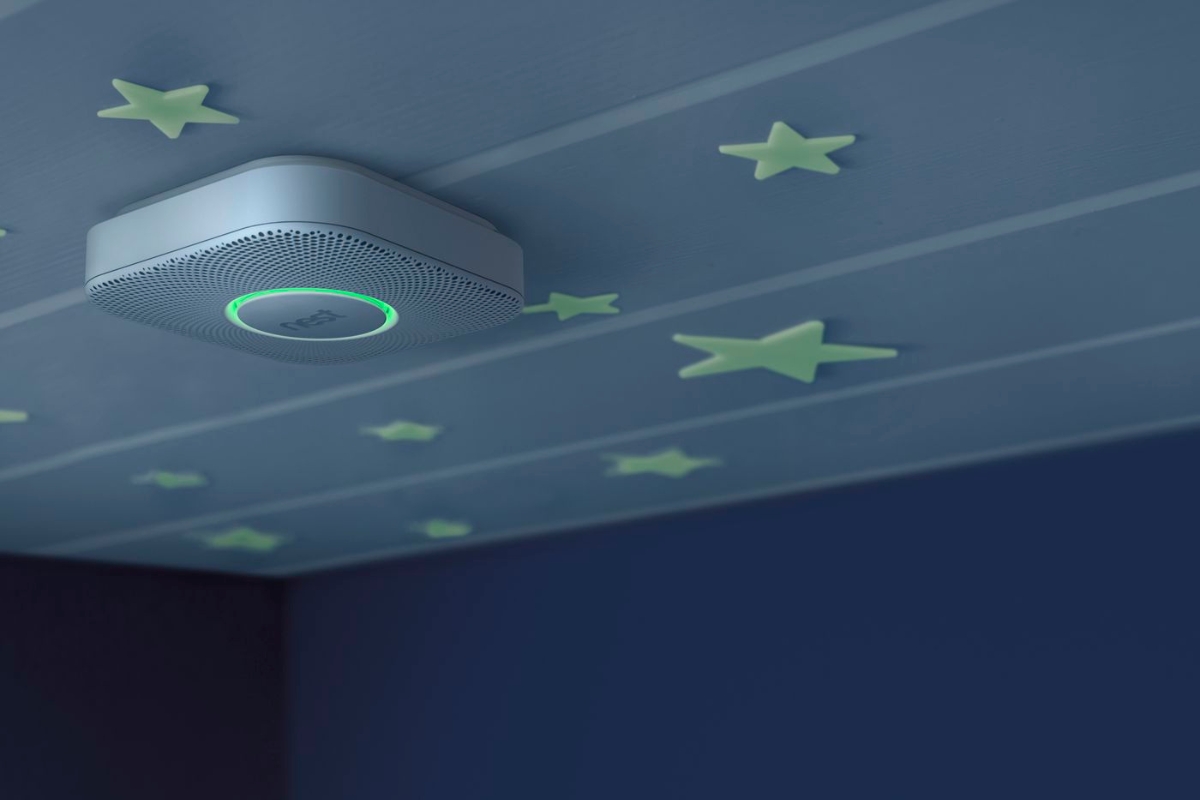
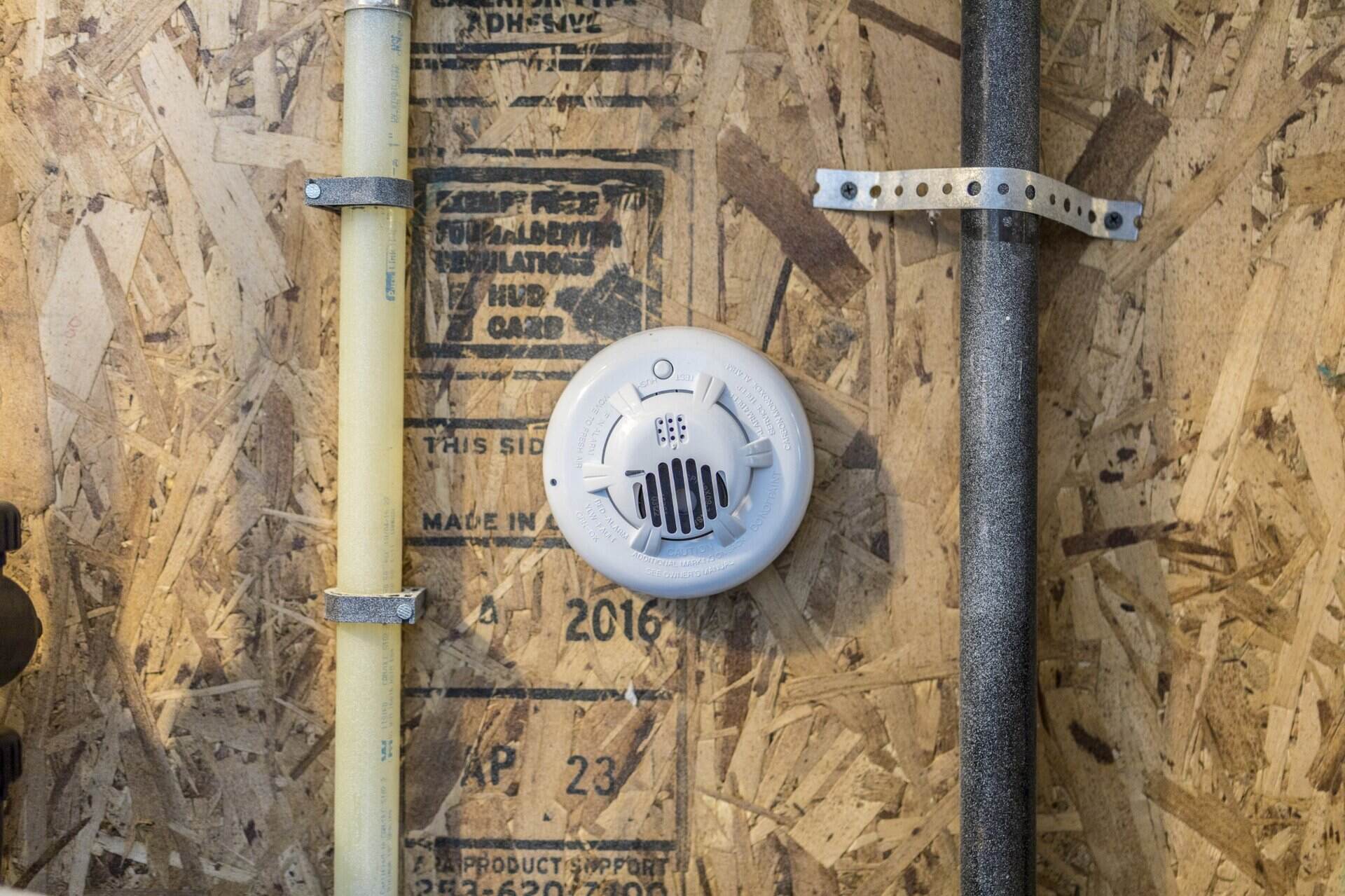
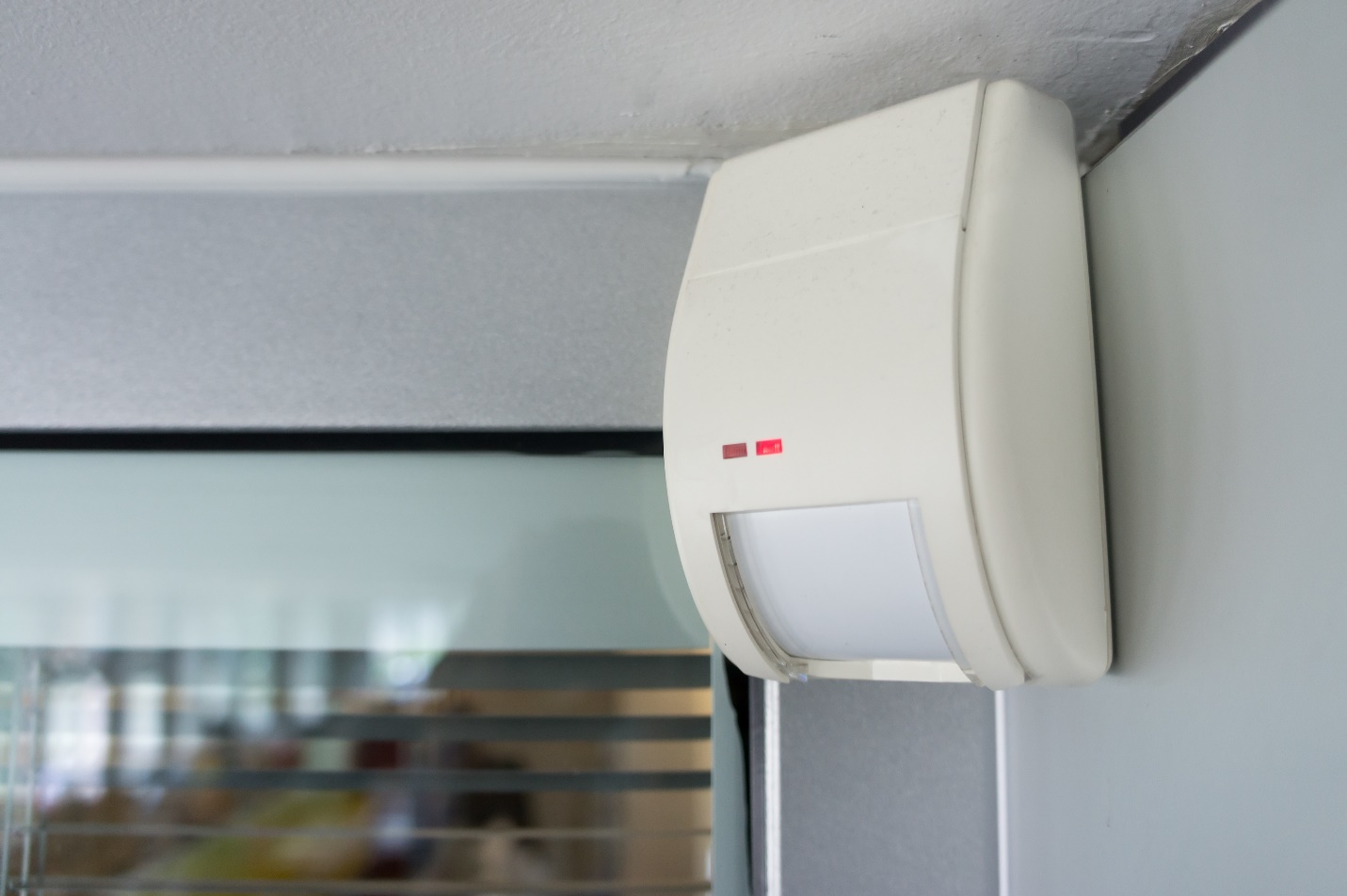
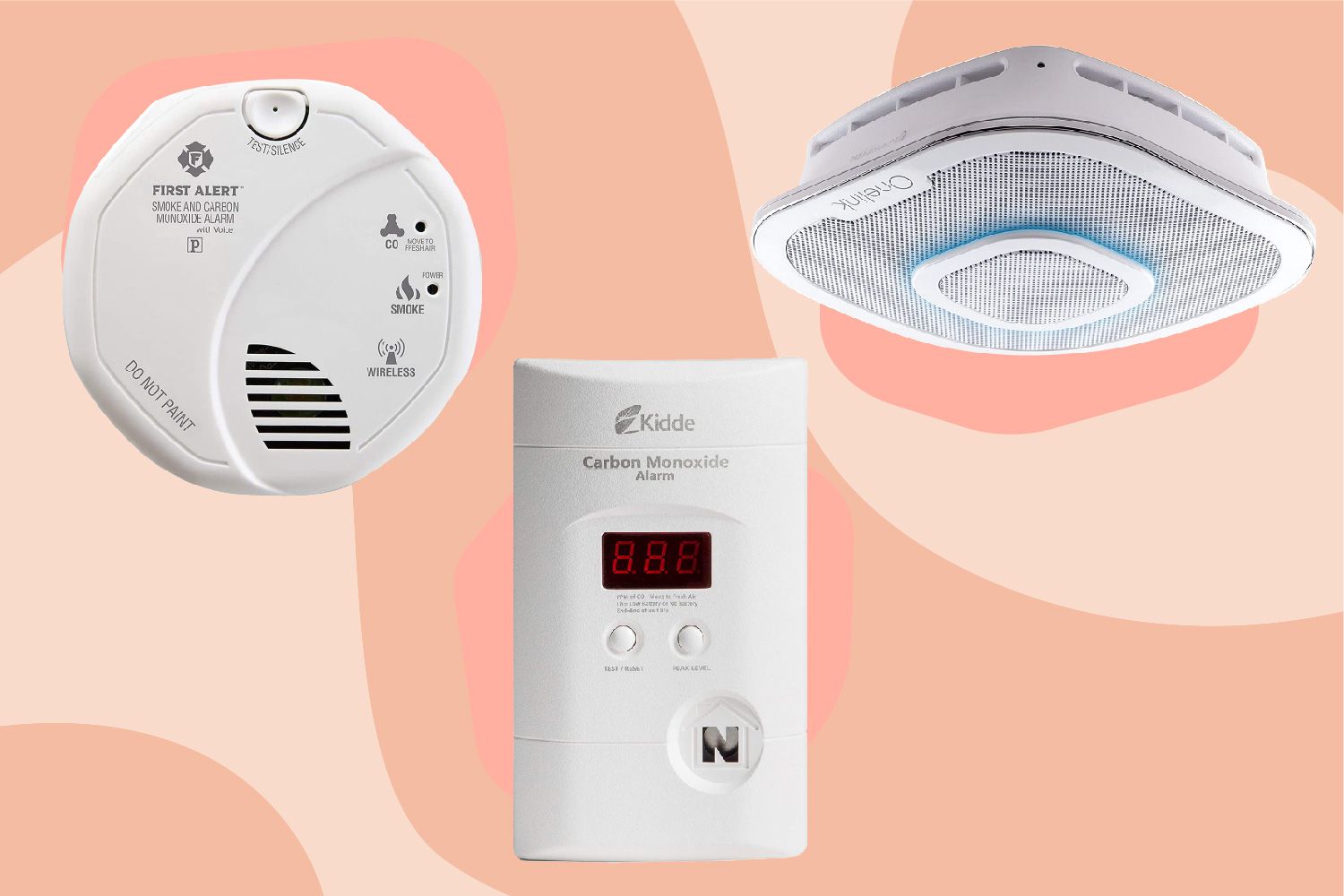

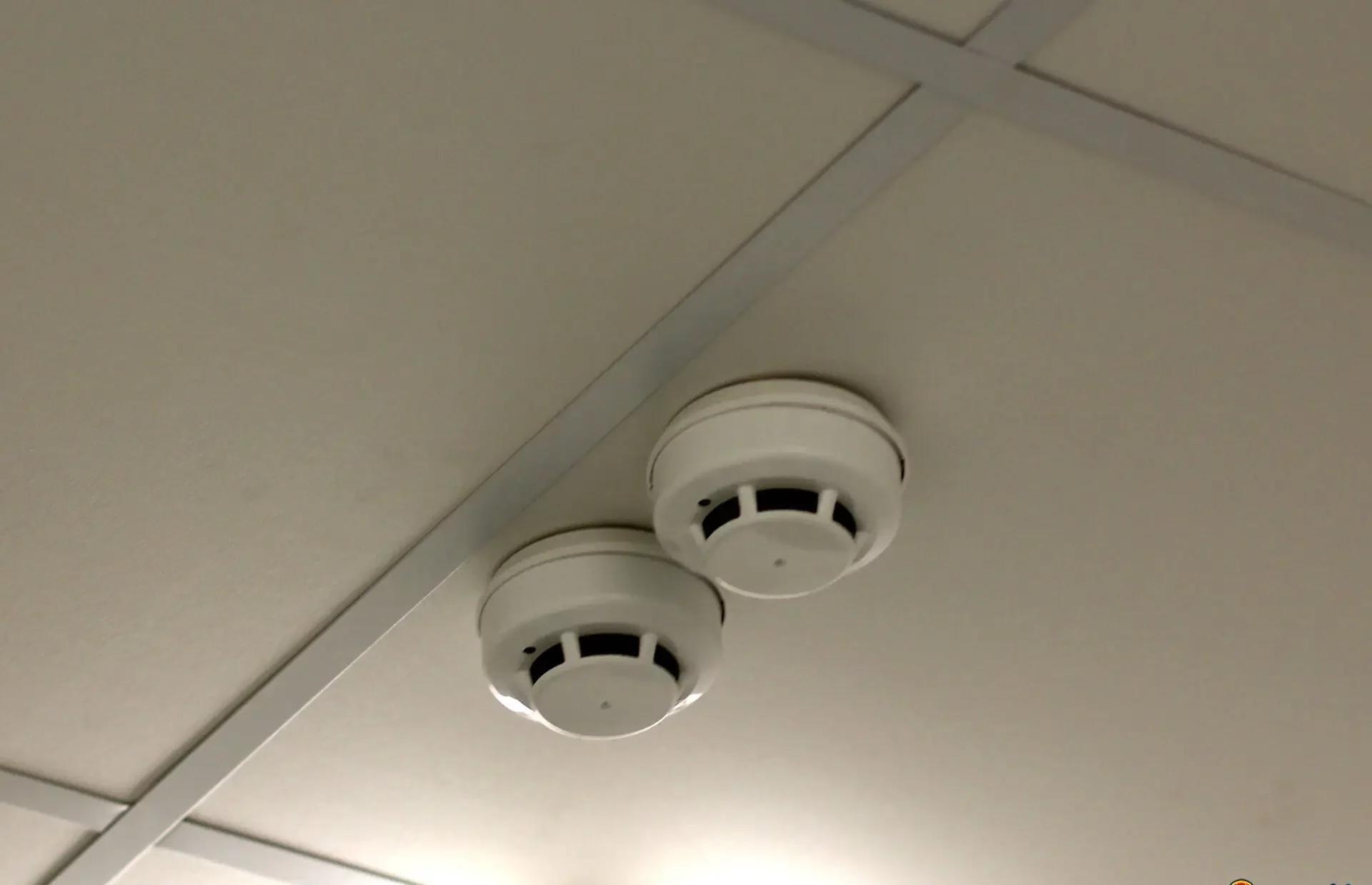
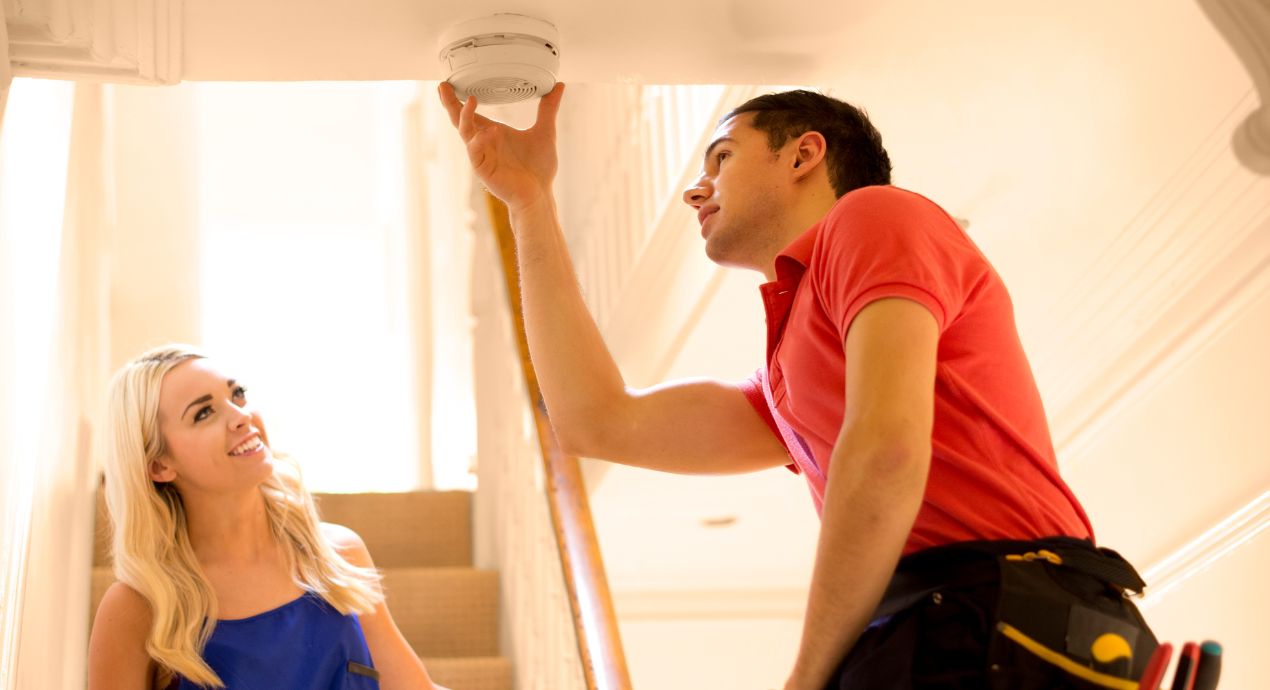
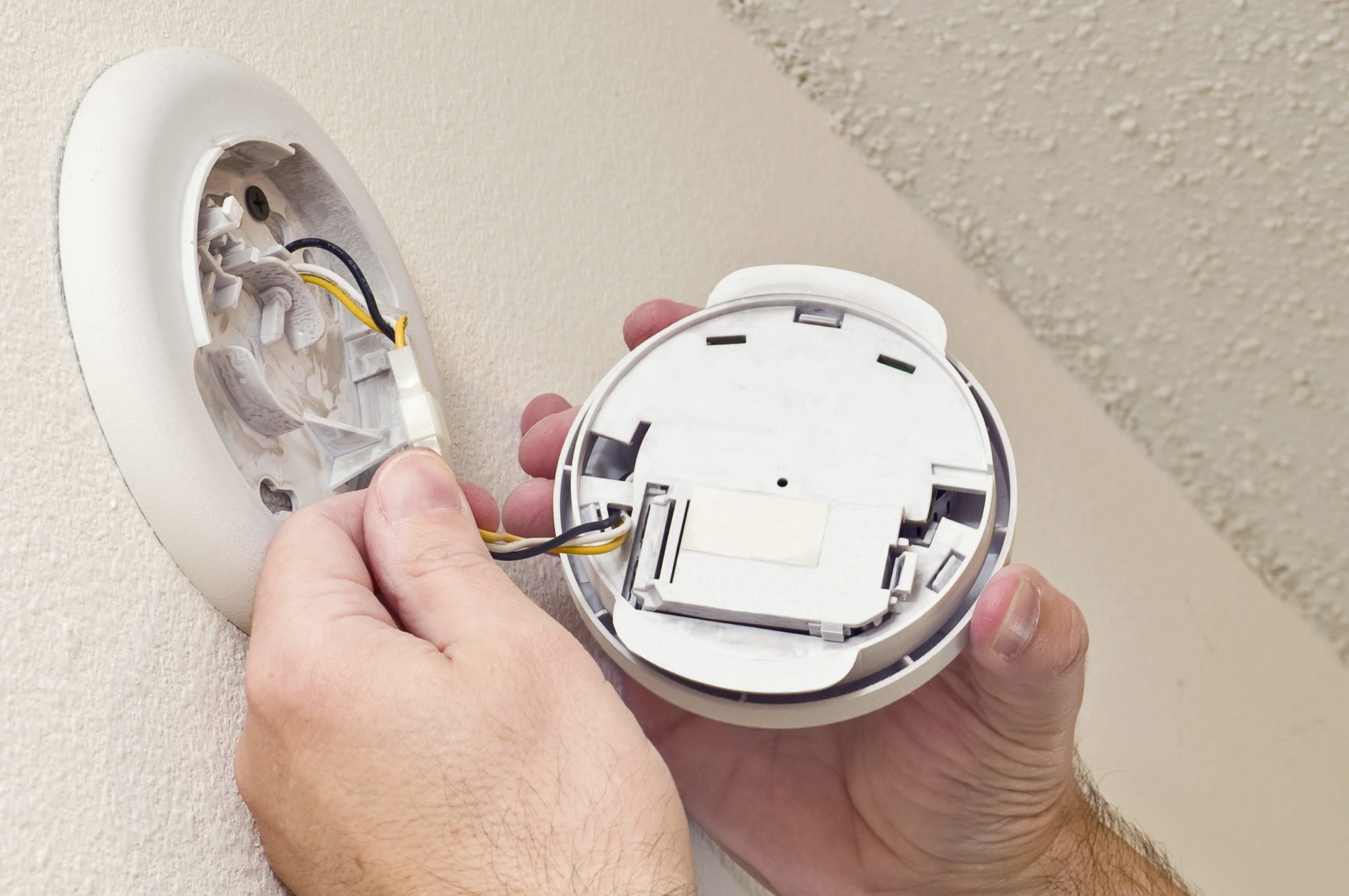
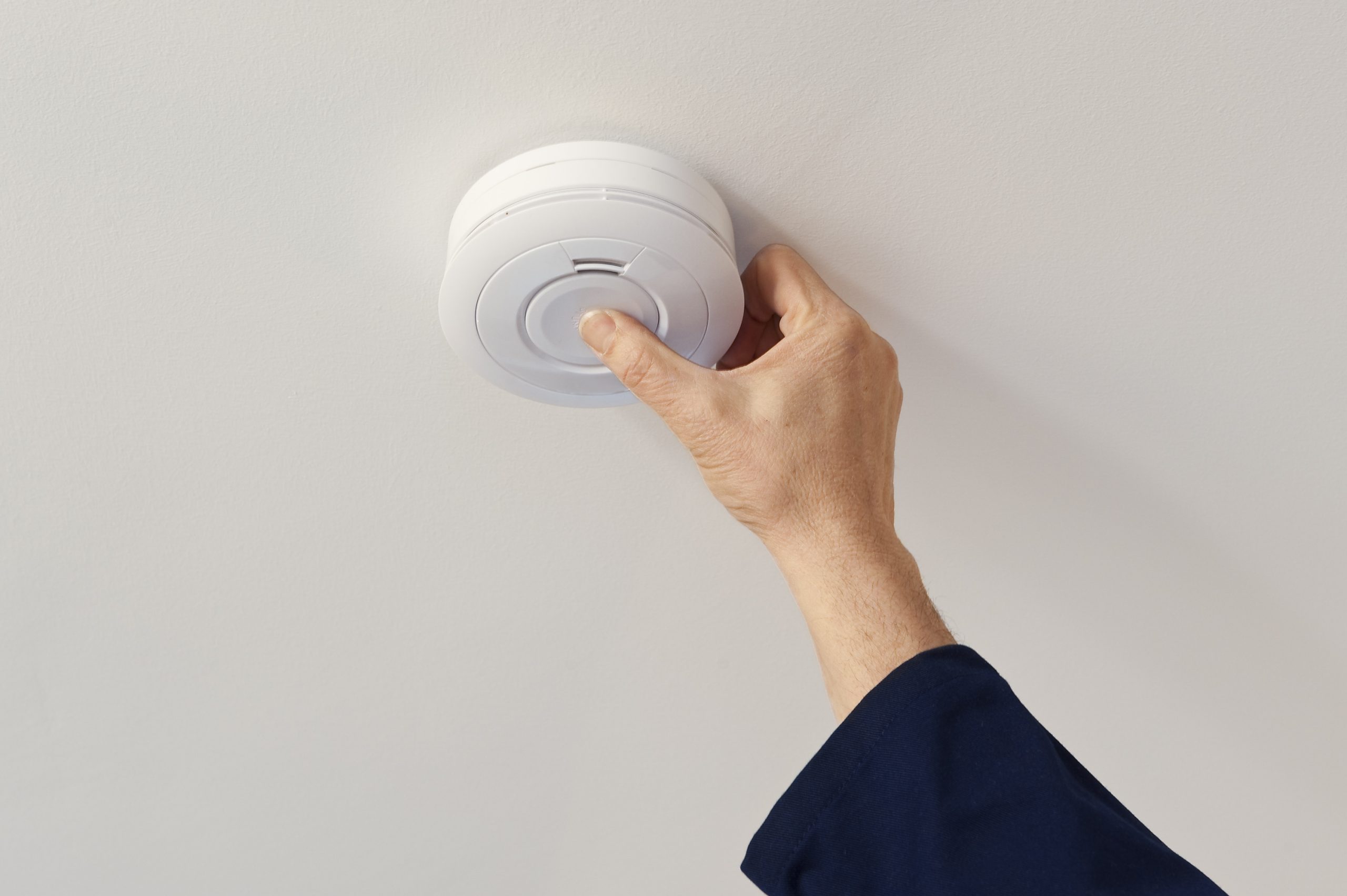
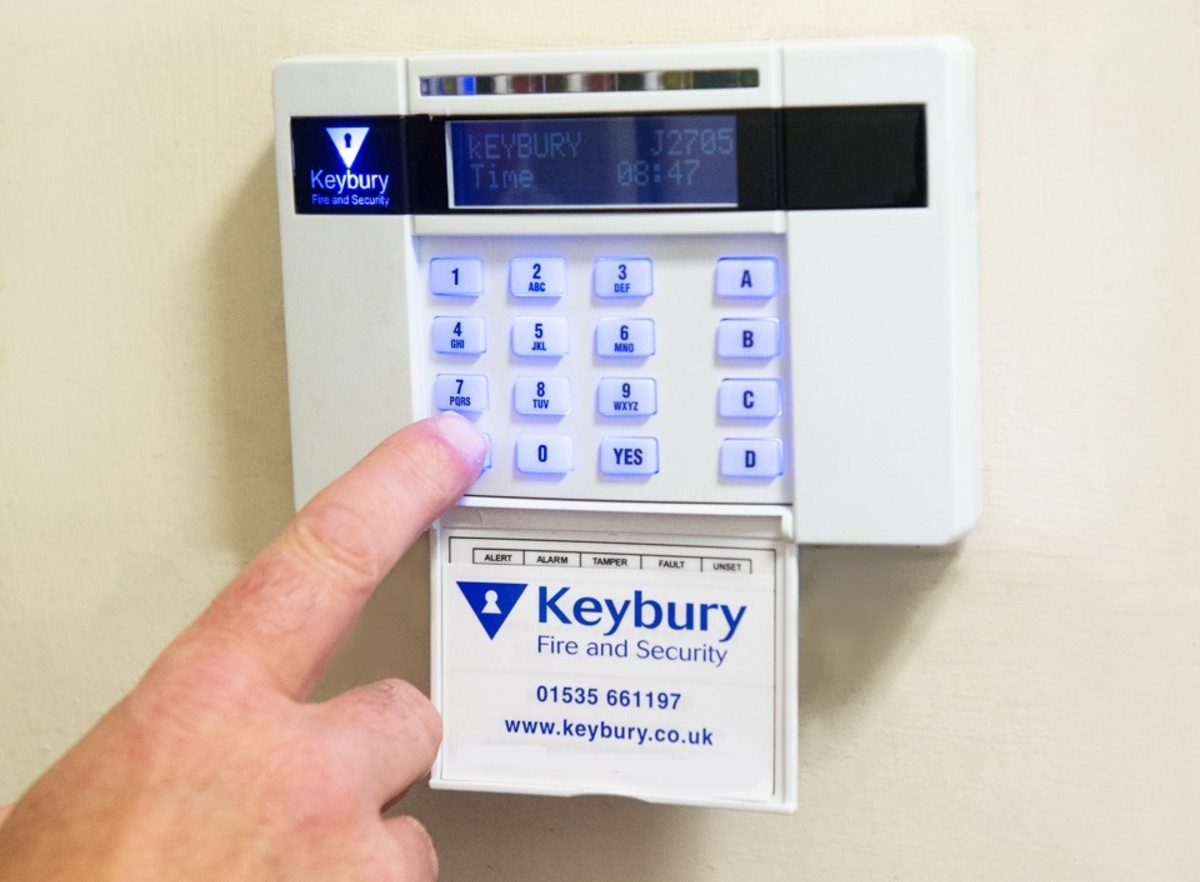
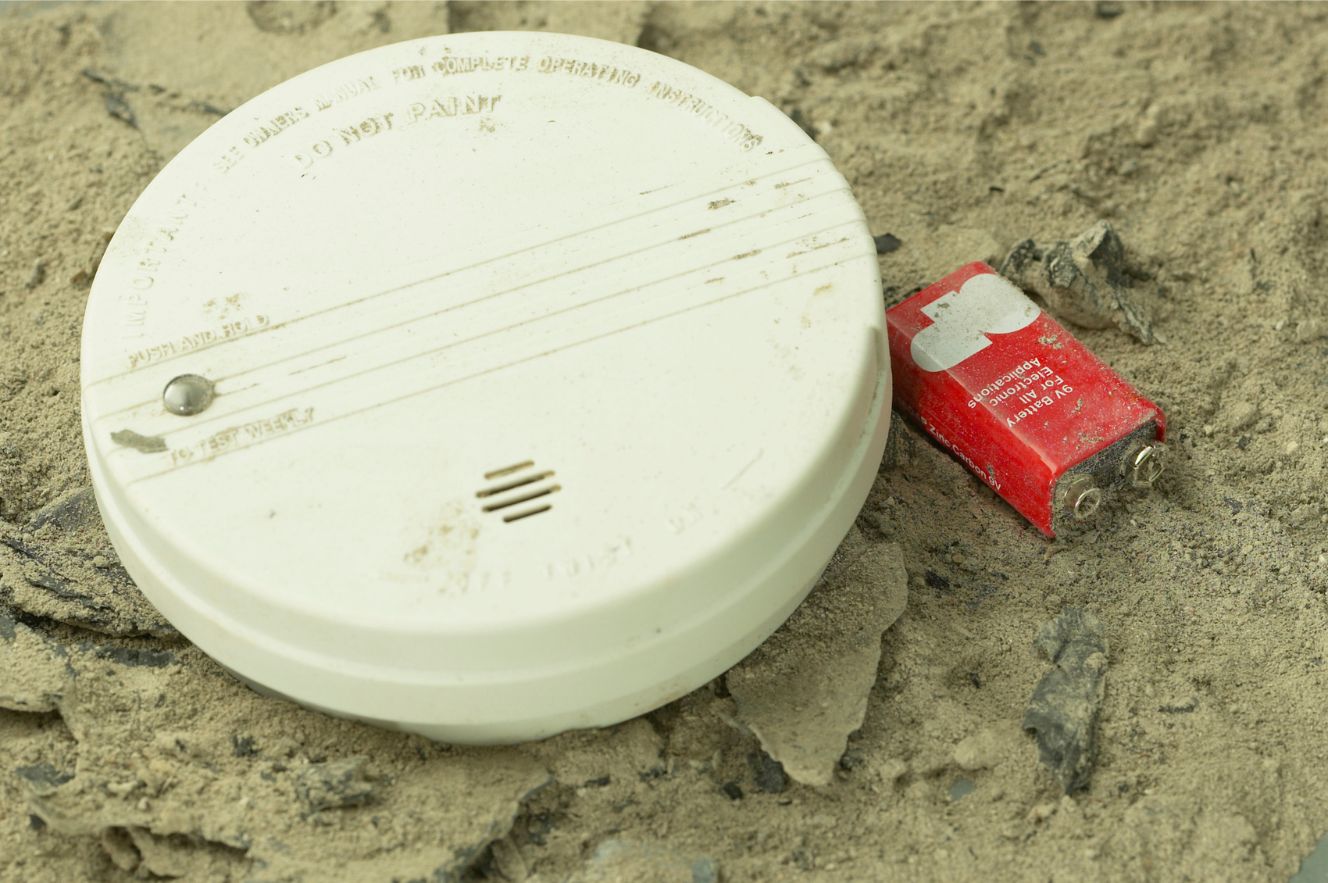

0 thoughts on “Why Do Smoke Detectors Give False Alarms?”